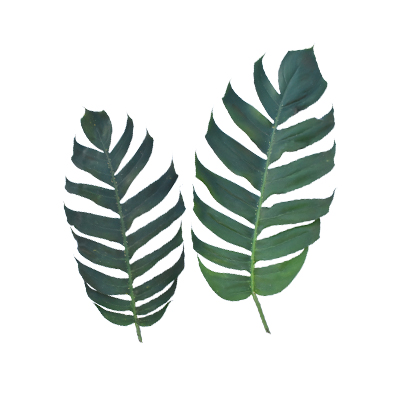Dragon Tail Plant
Epipremnum pinnatum L. Engl.
Araceae
Location in our garden
Principal



Synonym
Epipremnum angustilobum K.Krause
Epipremnum crassifolium Engl.
Epipremnum elegans Engl.
Habitus
Climbers. Epiphytic plant, creeping, climbing with a height of 5 to 20 m
Part Used
Leaves
Sap
The Whole Plant
Growing Requirements
Need Shade
Habitat
Forest
Roadside
Overview
Dragon tail plant is one of the Indonesian plants, has known as a medicinal plant. Biodiversity in the earth is not only used as food, but also useful as an ingredient to treat various types of diseases, Dragon tail leaf plants are used as medicine
Vernacular Names
Tibatib (Philippines), Ngot (Thailand), Cortina (Spanish), Kelembahang (Malaysia), Gajathippali (India), Ling shu teng (Chinese), Galgalut (Papua New Guinea)
Agroecology
Plant in friable rich soil at base of support tree, wall or fence, and allow it to climb. Tolerates some amount of waterlogging and salinity. Grows faster when located in sunnier spot.
Morphology
- Roots - dragon tail plant roots are attached to the pedestal like a wall or tree and also have a hanging root.
- Stem - round stems have nodes and sticky roots.
- Leaves - green , sharing and cutting and tapering leaves. Spatha is shaped like a canoe, and cylindrical spadic.
- Flower - small (3-7 mm across) on spathespadix inflorescences. Spathe (modified leaf) canoe-shaped, 10 cm long, greenish on outside, creamy-white on inside;
- Monoecious species, spadix holds male and female flowers separately, white when fresh, maturing to creamy greygreen and then dark yellowish-green during anthesis, before air-drying to dark brown or almost black after anthesis. No noticeable scent upon anthesis.
- Fruits - aggregate berries clustered on medium-green spadix, red when ripe, containing small brownish seeds embedded in sticky orange-red pulp
Cultivation
- Seed propagated (if available).
- Vegetatively propagated by stem cuttings
Chemical Constituents
Alkaloid compounds, flavonoids, saponins, tannins, glycosides, steroids (triterpenoids), ethyl acetate.
Traditional Medicinal Uses
- It is used to treat cancer, reduce body fat, anti hypertension, rheumatism,tendon (sprained), cough and stroke therapy
- The leaves against Streptococcus mutans, Pseudomonas aeruginosa,Salmonella typhi, and Shigella dysenteriae bacteria
- The leaves have been used as traditional anticancer in Singapore.
- Indonesian people have also used it as diuretic agent, and antibacterial.
- In the Philippines, the sap is applied to snake bites, and the inflorescence is used as an emmenagogue.
- In New Britain, the leaves are used externally to treat abscesses and swellings.
- In Vietnam, whole plants are used in traditional medicine, to treat fractures, bruises, cough, paralysis, rheumatism, conjunctivitis, mastitis, ecchymosis and furuncles, and as an antidote
Part Used
Reference Sources
- Flora Fauna Web. (No date). Epipremnum pinnatum (L.) Engl. https://www.nparks.gov.sg/florafaunaweb/flora/1/3/1393. 16.01.2021.
- Masfria, M., Marianne, M., & Permata, Y.M. (2019). Organic and Inorganic Analysis of Rhaphidophora pinnata (l.f.) Schott Water Extract. Journal Med Science Vol 7(22): 3790–3793. https://www.ncbi.nlm.nih.gov/pmc/articles/PMC7048350/ 16.01.2021.
- National Parks. (No date). Epipremnum pinnatum (L.) Engl. https://www.nparks.gov.sg/florafaunaweb/flora/1/3/1393. 16.01.2021
- Stuartxchange. (2017). Philippine Medicinal Plants. Tibatib. http://www.stuartxchange.com/Tabatib.html. 16.01.2021.
- Tualeka, A., Mapanawang, A.L., Petrus, H.C., & Gambe, A. (2018). Identification of Phytol Compounds contained in the Methanol Extract of Dragon Tail Leaves (Rhaphidophora pinnata (L.F) Schoot). International Journal of Health Medicine and Current Research Vol. 3(03): 999-1003. https://ijhmcr.com/submit_issue/pdf-issue/ijhmcr-1538321139.pdf. 16.01.2021.

